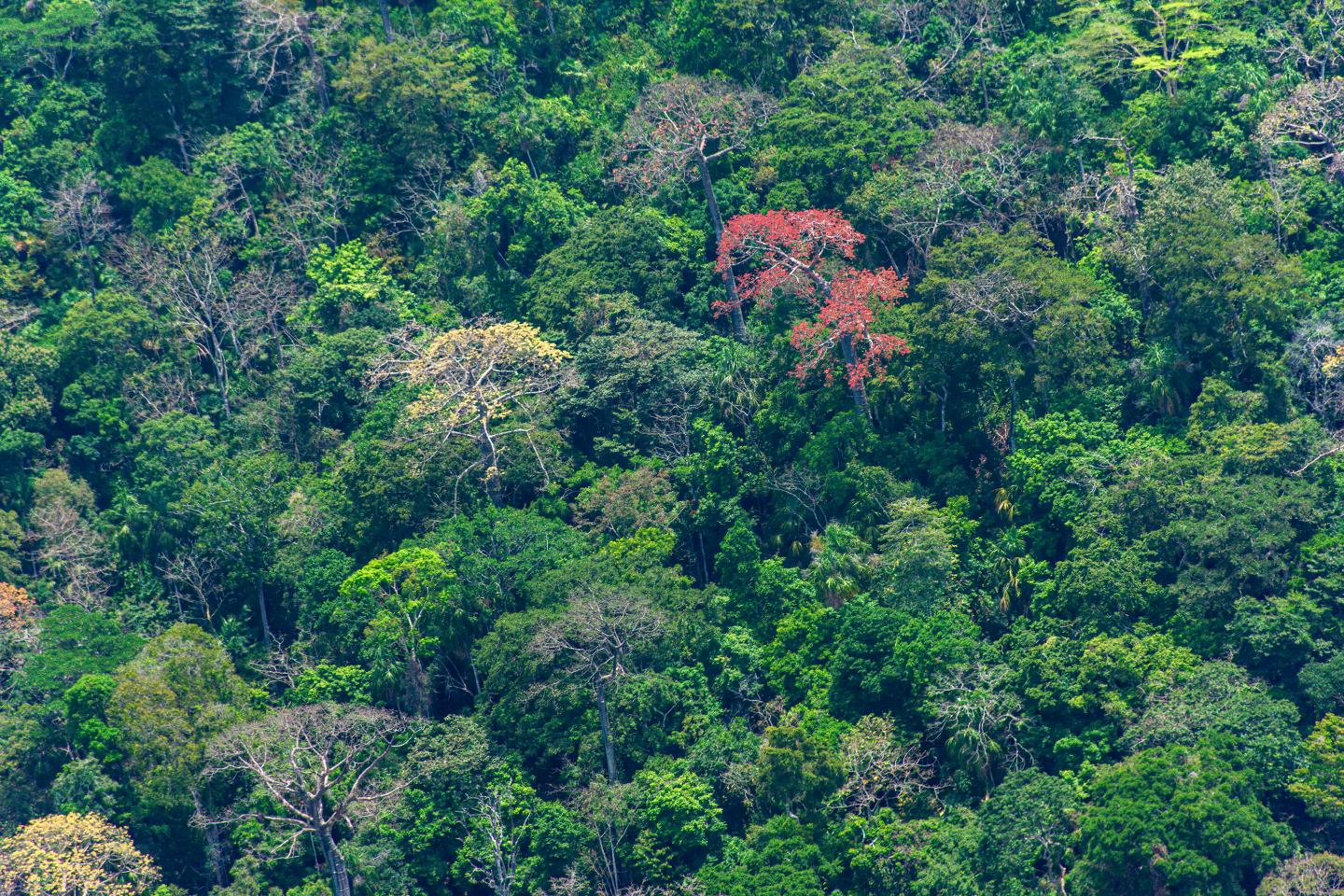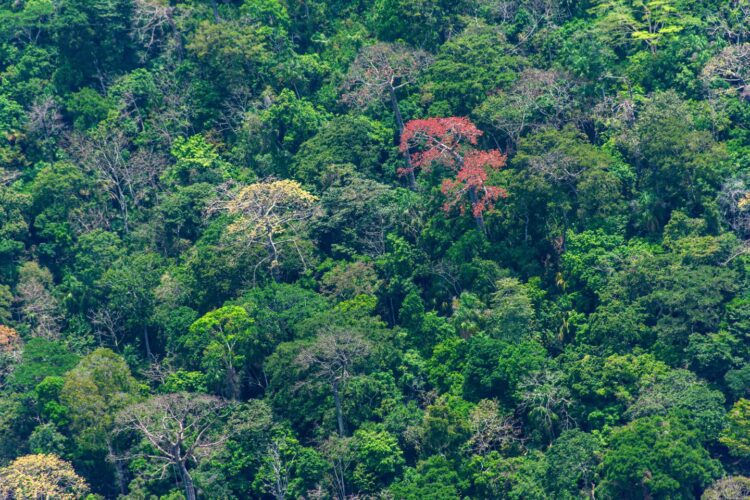
Credit: Steve Paton, STRI
Investors who bet on tropical forest conservation and reforestation to solve global warming by storing carbon in wood face huge uncertainties because the science behind predicting carbon stocks is still shaky. Even the best Earth Systems Models fail to predict how carbon stored by tropical forests varies from place to place. The New Phytologist invites scientists doing the “most-exciting, ground-breaking research” to review timely topics in a way that non-scientists can understand. Helene Muller-Landau, staff scientist at the Smithsonian Tropical Research Institute (STRI) was chosen to write the authoritative Tansley Review of carbon accounting in the tropics.
She worked with Kristina Anderson-Teixeira, also a STRI staff scientist at STRI’s Center for Tropical Forest Science-Forest Global Earth Observatory (Smithsonian ForestGEO), post-doctoral fellows from Columbia University and Princeton University, and two STRI interns to sift through dozens of studies to synthesize patterns of how tropical forest productivity and carbon storage varies across the globe. They conclude that warm, wet tropical forests with moderately fertile soils store more carbon.
“Ecologists have been studying tropical forests for over a hundred years,” said Muller-Landau, “but most studies focus on a single forest type or a single region, making it hard to see the big picture of how carbon flows through forests. We lacked a synthesis of how tropical forests vary with climate, soils, and disturbance regime, and of what we know about the mechanisms underlying this variation.”
The authors gathered studies from tropical forests around the world that measured variables such as carbon stocks, forest productivity and carbon residence time in eight or more sites differing in temperature, precipitation, elevation, and/or soil fertility. STRI interns Eva Arroyo and Bogumila Backiel contributed to the literature review and analyses.
KC Cushman, a post-doctoral fellow with funding from the Next Generation Ecosystem Experiments-Tropics, U.S. Department of Energy, Office of Science, Office of Biological and Environmental Research determined the geographical location of each study and obtained climate information for every site from the global CHELSA climate datasets so the team could evaluate the ranges of climate variables for all of the studies.
“One of the challenges is that the older studies don’t estimate carbon or report results in terms of carbon,” Cushman said. “But they often report other quantities that are reasonably good proxies; for example, canopy height is a good predictor of forest carbon stocks.”
Some big take-away’s emerged: In wet tropical forests, trees grow faster and store more carbon than in drier forests. Low elevation forests are taller and store more carbon than high elevation forests.
And when soils are more fertile, trees are more productive, which would, all else being equal, be expected to lead to higher carbon stocks. But when soils are more fertile, trees also die faster, which, on its own, would lead to decreasing carbon stocks with higher fertility. But putting those two things together, carbon stocks should be greatest at intermediate fertility, which would explain why previous studies do not agree upon whether carbon stocks increase or decrease with soil fertility.
Another big takeaway is that little is known about tree mortality, even though it is essential for predicting carbon stocks. In areas where the forest is disturbed more often, or tree mortality is higher for other reasons, less carbon is stored as biomass, and it flows through the system faster.
Although the patterns of carbon storage in tropical forests differ from place to place, the general patterns are surprisingly consistent. African and Asian tropical forests have higher biomass in areas where the climate is similar to that in American forests, for example. Certainly, there are important exceptions to the rules-for example, some high-elevation forests are very high in biomass. But the exceptions help researchers to identify the general mechanisms underlying these patterns.
As she began the review, Muller-Landau consulted former STRI staff scientist Egbert Leigh’s classic text Tropical Forest Ecology, for a summary of general understanding before her synthesis. Leigh noted that dry forests (those with dry seasons of 5 or more months) had lower productivity and biomass, but considered all other lowland forests, including those with shorter dry seasons as well as ever-wet forests, to have similar leaf productivity, mortality and biomass. Her new synthesis shows that, in fact, there is a lot of variation among these forests, and that this variation is structured by climate and soils, with broadly consistent relationships across regions.
“This synthesis enormously widens our sense of how above-ground carbon stocks vary with climate and soil fertility,” Leigh said when asked to comment, “and makes it much easier to ask questions about the causes of these relationships.”
###
Media Contact
Elisabeth king
[email protected]
Related Journal Article
http://dx.





